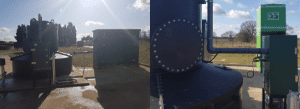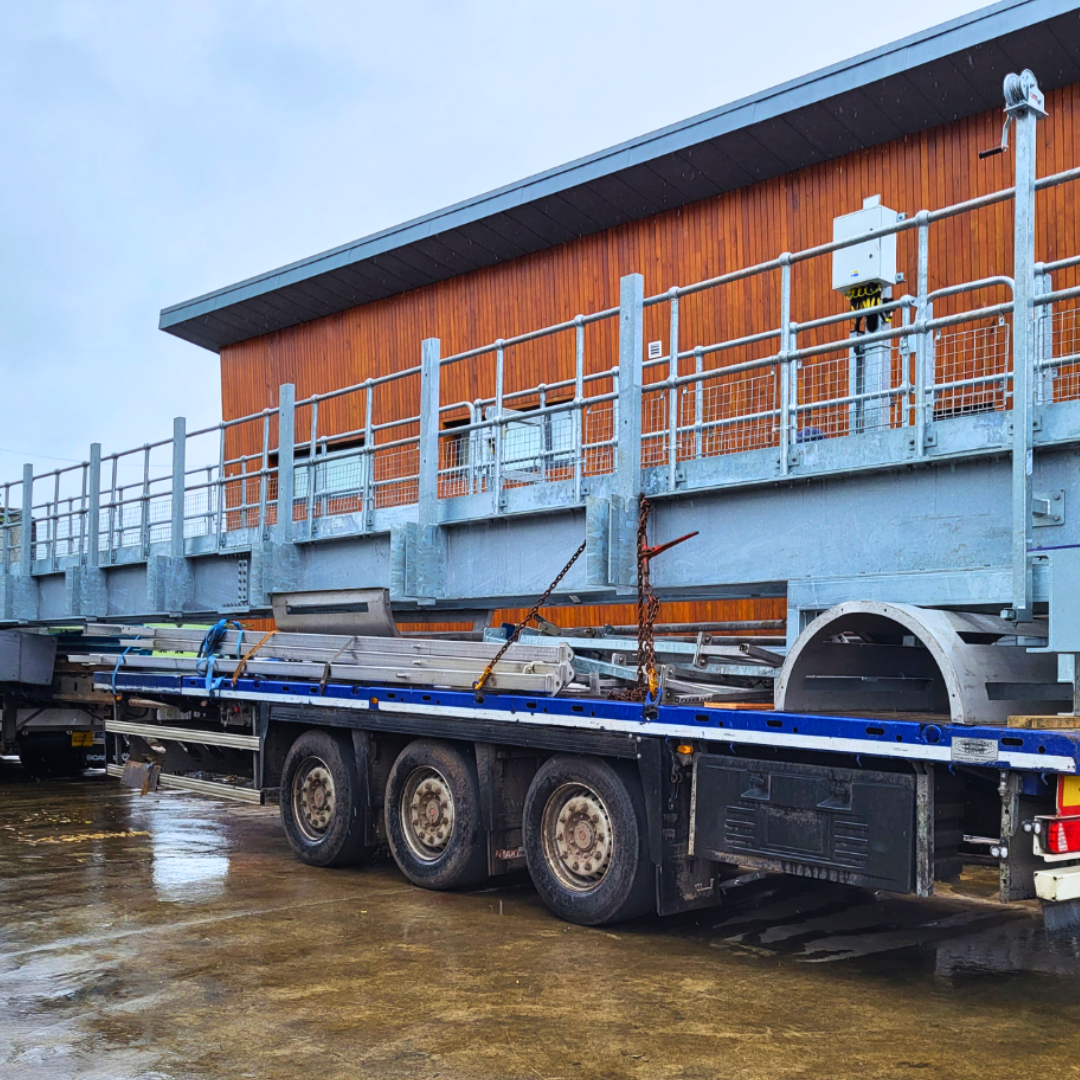Chemical dosing systems satisfying phosphorus removal requirements – Mattersey Thorpe (STW)
Colloide Engineering Systems recently acted as Mechanical and Electrical sub-contractor, working under principle contractor, North Midland Construction PLC (NMCN) for Severn Trent Water as part of overall upgrade works at Mattersey Thorpe Sewage Treatment Works.
Mattersey Thorpe Sewage Treatment Works is located in the Doncaster district. Mattersey Thorpe currently discharges into the River Idle. The process stream consists of an Inlet treatment works, 2 No. Primary Settling Tank’s, 2 No sludge holding tank, 2 No balance/storm tank and 5 filter beds.
A 5m3 Tank 1 Pump Chemical Dosing System was installed by Colloide to satisfy the phosphorus removal requirements of this project. The chemical dosing system consisted of a chemical storage tank, chemical fill point and dosing kiosk. The dosing kiosk contained a chemical dosing LCP and all associated pump and instrumentation.
Poly-Aluminium Chloride is stored in a tank which feeds the dosing pump. The tank level is monitored by an ultrasonic level controller and a leak detection probe which is fitted in the bund for the tank. There is 1no dosing pump installed in this rig, with capacity for 4no total.
This package dosing system was designed and constructed with a view to reducing time on site. Our packages are tailored to suit clients’ requirements while adhering to WIMES Specifications, British & European Standards, Ciria and HSE guidance.

Photos of Mattersey Sewage Treatment Works before Colloide began install.

Photos of Mattersey Sewage Treatment Works after Colloide install.
Scope of work
Colloide were tasked to design and install a chemical dosing rig to store and deliver Poly-Aluminium Chloride into a nearby Humus Tank and an LCP to accommodate. This encompassed delivery to site, offload, positioning and Install, offsite and onsite assembly as required, site acceptance testing (SAT) and site commissioning.
The SAT’s on this project included hydrostatic testing of the chemical storage tank, pressure testing of all pipework and tests on pumps and instrumentation. An Annual System Inspection is also carried out by Colloide to ensure the rig is operating to the highest standard.
Why treat phosphorus?
Phosphorus from our effluent can cause eutrophication in rivers. It is a nutrient and if released unchecked into rivers or other bodies of water, promotes the growth of algae and other plants, turning waterways green and causing hypoxia (lack of oxygen) in the water which kills fish and other aquatic animals. To protect water bodies, the Water Framework Directive (WFD) requires wastewater companies to meet much tighter phosphorus limits than we’ve had in the past (0.5mg/l). This is part of a strategy driven by the Water Industry National Environment Programme (WINEP) and the Water Framework Directive to face current environmental challenges.
Our experience and satisfying phosphorus removal requirements
Colloide offer a range of technologies which can reduce phosphorous limits to 0.1 milligramme per litre which greatly reduces the amount of phosphorus discharged into streams and rivers and can satisfy phosphorus removal requirements. We also provide solutions for chemicals such as sodium hydroxide, sulphuric acid, hydrochloric acid, ferric sulphate, aluminium sulphate, ferric chloride and antifoam ortho-phosphoric.
We have access to the latest technologies and long-standing relationships with an extensive range of component suppliers.
Sources:
https://wwtonline.co.uk/features/phosphorus-removal-how-low-can-you-go-
Similar Posts
Get in touch
Get in touch to find out more
Check out our full range of water treatment technologies or if you would like to speak with us about this particular product or chemical dosing.




